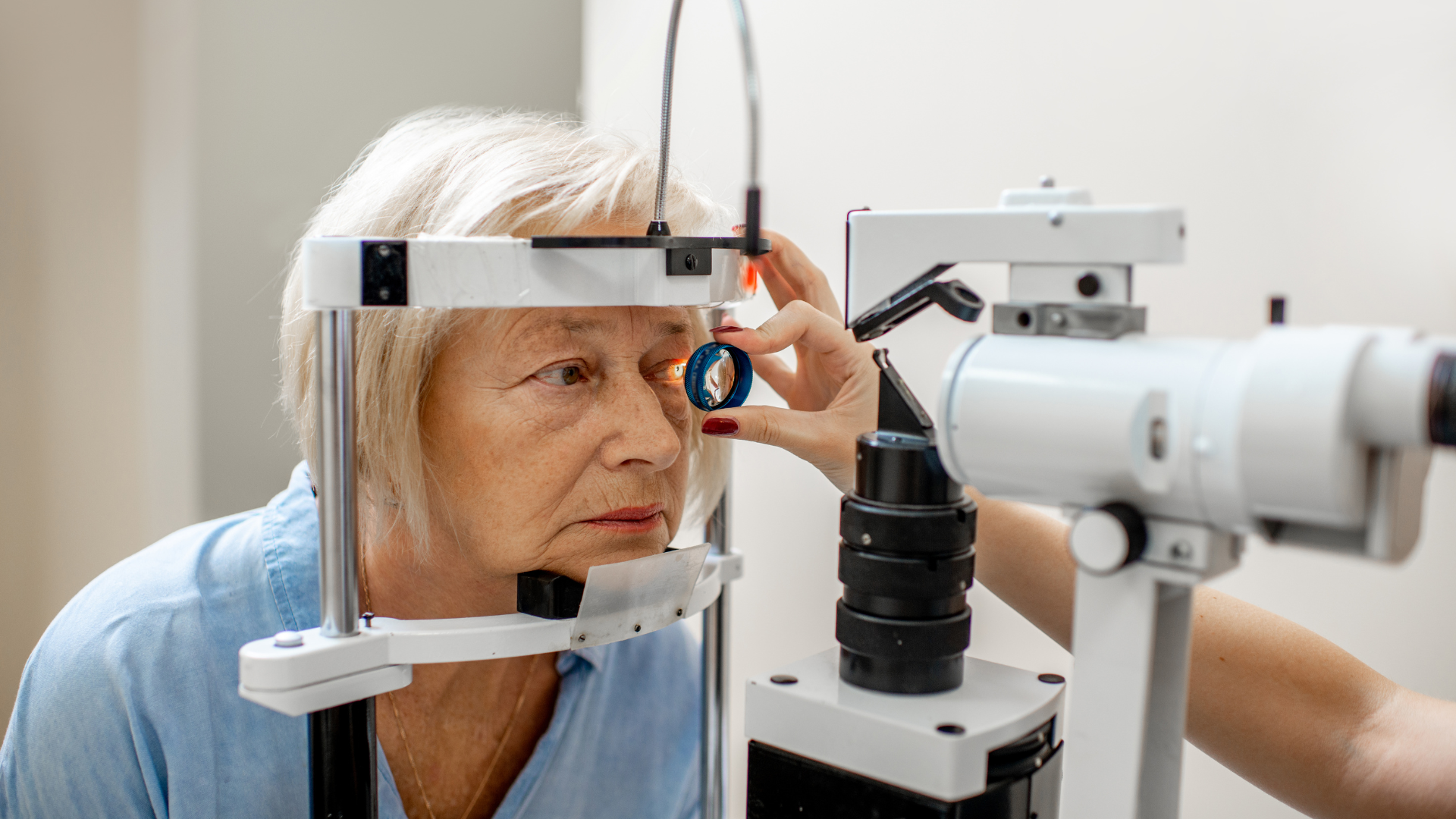The retina is proving key in the early detection of Alzheimer’s and other neurodegenerative disorders and could eventually become an important pathway for slowing the progression of these diseases and mitigating their symptoms, according to noted retinal processing expert Deborah Zelinsky, O.D.
“The retina is composed of brain tissue and plays a critical role in the central nervous system. It is the only part of the brain that is exposed and readily accessible to non-invasive techniques, including stimulation using light,” Dr. Zelinsky told participants at the July 2023 Alzheimer’s Association International Conference.
She speaks from extensive experience.
Retinal Stimulation and the Mind-Eye Institute
The Mind-Eye Institute, based in Northbrook, Illinois, is an advanced optometry practice which Dr. Zelinsky founded and where she currently serves as executive research director. The Institute is internationally known for its use of therapeutic eyeglasses and other advanced optometric tools to manipulate the amount, angle, and intensity of light passing through the retina. Such manipulation can create changes in the brain function of patients struggling with the symptoms of traumatic head injury, concussion, stroke, and neurological disorders. Retinal stimulation also has proven effective in building undeveloped visual processing skills in children – and adults – with autism spectrum disorder, attention deficit hyperactivity disorder, and other learning, socialization, and behavioral difficulties.
“[The retina] is the only part of the brain that is exposed and readily accessible to non-invasive techniques, including stimulation using light."
Environmental signals in the form of light enter the retina and convert into electrical signals, which propagate through neurons and interact with key brain structures. These retinal signals affect not only the visual cortex but other, significant regions of the brain as well, linking with structures like the limbic system, the cerebellum, midbrain, thalamus, hypothalamus, and brainstem.
“Optical interventions, such as highly individualized eyeglass lenses, can selectively stimulate retinal activity, thereby influencing retinal processing and brain function,” she said during her conference presentation. “In fact, retinal light stimulation could be used to map the changing brain during neurodegeneration.”
The Connection Between Alzheimer's and the Retina
Dr. Zelinsky’s comments follow recent publication of a significant study in a May 2023 issue of the journal Alzheimer’s and Dementia. In it, researchers found that detectable abnormalities in the retina’s blood vessels – specifically, vascular disruptions that restrict blood flow and allow toxic substances to pass the blood-retinal barrier and contaminate the retina -- are potential harbingers of developing Alzheimer’s disease. Accumulations of the protein beta-amyloid can clog the small blood vessels and arteries in the retina. This waste protein is associated with Alzheimer’s. Study investigators determined that, in patients with Alzheimer’s disease and mild cognitive impairment, as much as 70 percent of the blood-retinal barrier may be damaged.
Alzheimer’s disease is a progressive, neurodegenerative disorder that leads to cognition impairment and irreversible memory loss. It is the most common form of dementia and afflicts about 10 percent of the population over age 65.
If not flushed from the brain through the glymphatic system, beta-amyloids begin to clump together, forming plaque that impairs communication among brain cells and leads to progression of Alzheimer’s disease. The glymphatic system, activated during sleep, allows cerebral spinal fluid to enter the brain and clear it of waste products, including beta-amyloid.

In patients with Alzheimer’s disease and mild cognitive impairment, as much as 70 percent of the blood-retinal barrier may be damaged.
Until recently, amyloid buildup could only be determined by analyzing the brains of Alzheimer’s patients post-mortem, Dr. Zelinsky said. “However, recent investigations show amyloid accumulation is measurable outside the brain -- in retinal and optic nerve locations -- and linked to malfunctioning circadian and cognitive circuitry in the brain. Circadian rhythm is disrupted when specific retinal cells involved with sleep become target of amyloid plaques. Also, cognitive changes are further evidenced by thinning of retinal tissue that corresponds to the brain’s hippocampal volume.
“The glymphatic systems in both the brain and the eye are retinal-related and implicated in cognitive decline,” Dr. Zelinsky stated.
But a faulty glymphatic system and beta-amyloid accumulation are not the only indications of the presence of Alzheimer’s. The brain’s diminished capacity to uptake glucose, a simple sugar molecule that serves as an important energy source, is another sign. Indeed, authors of an article in a 2022 issue of the Journal of Cell Immunology, contend “diminished uptake of glucose in the brain is [actually] a better marker for classifying Alzheimer’s disease than beta-amyloid…deposition.”
The Future
Dr. Zelinsky concluded her conference discussion by suggesting that retinal stimulation may one day prove useful in modulating the glymphatic system and glucose metabolism, thereby “changing the course of neurodegeneration.”
As the Alzheimer’s Association emphasizes, “early detection and diagnosis are critical factors in providing patients with proper care to help mitigate symptoms and, perhaps, slow progression of disease. Ongoing advancements in retinal imaging eventually will allow optometrists and other eye specialists to detect brain changes at an earlier point when symptoms are only mild or, perhaps, not yet even manifest and, therefore, more responsive to therapy,” she said.

